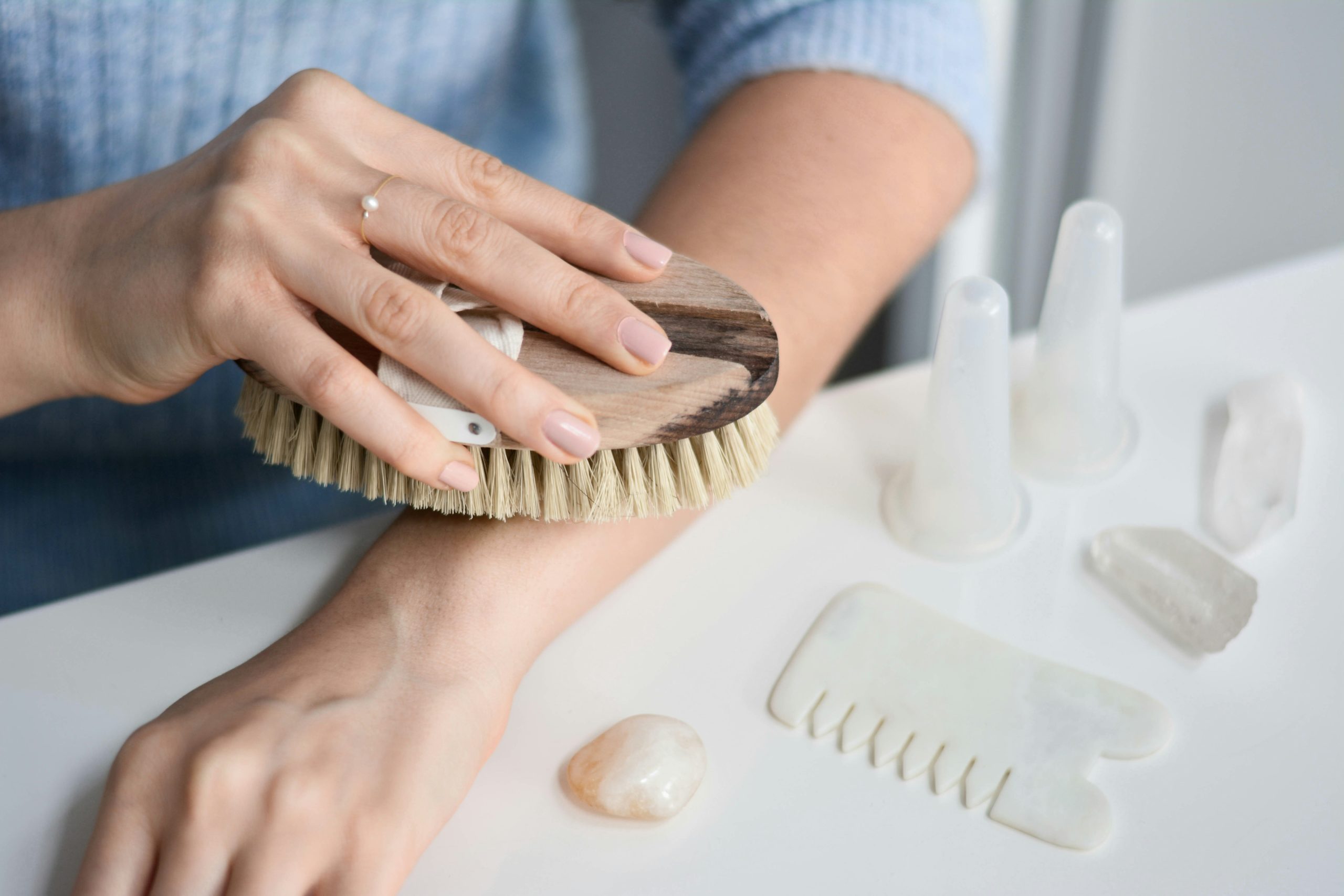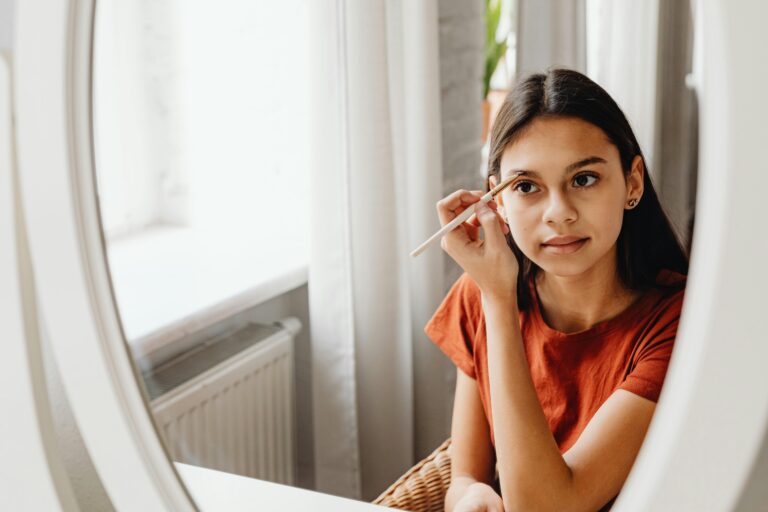There are countless skincare products and treatments available on the market. However, one often-overlooked technique that has been gaining popularity in recent years is dry brushing.
Originating from ancient Ayurvedic practices, dry brushing involves using a natural-bristled brush to gently exfoliate the skin and stimulate circulation.
While it may seem like a simple and straightforward technique, the benefits of dry brushing are far-reaching, ranging from improved skin texture and tone to enhanced detoxification and overall well-being.
In this article, we’ll explore the numerous benefits of dry brushing for skin exfoliation and circulation, and how incorporating this practice into your skincare routine can transform the health and appearance of your skin.
The Science Behind Dry Brushing
At its core, dry brushing is a form of mechanical exfoliation that involves using a brush with natural bristles to slough away dead skin cells and unclog pores.
This gentle friction not only helps to remove impurities and debris from the skin’s surface but also stimulates the lymphatic system, which plays a crucial role in detoxification and immune function.
When dry brushing, it’s essential to use a brush with natural bristles, as synthetic bristles can be too harsh and abrasive on the skin. The bristles should be firm enough to effectively exfoliate the skin but gentle enough to avoid causing irritation or damage.
Additionally, it’s crucial to brush in the direction of lymphatic flow, starting at the extremities and moving toward the heart, to maximize the detoxifying benefits of the technique.
The Benefits of Dry Brushing
1. Exfoliation
One of the primary benefits of dry brushing is its ability to exfoliate the skin, removing dead skin cells and revealing smoother, softer skin underneath. By sloughing away dry, flaky skin, dry brushing helps to improve skin texture and tone, leaving you with a radiant and youthful complexion.
2. Circulation
Dry brushing stimulates blood circulation and lymphatic flow, which can help to improve the overall health and appearance of your skin. Increased circulation brings oxygen and nutrients to the skin cells, promoting cell turnover and regeneration, while also aiding in the removal of toxins and waste products from the body.
3. Lymphatic Drainage
The lymphatic system is responsible for removing toxins and waste products from the body, but it relies on movement and exercise to function properly.
Dry brushing helps to stimulate lymphatic flow, encouraging the drainage of lymph fluid and supporting detoxification processes. This can help to reduce swelling and inflammation in the body, as well as promote a healthy immune system.
4. Cellulite Reduction
While dry brushing alone is not a miracle cure for cellulite, it can help to improve the appearance of dimpled skin by promoting circulation and lymphatic drainage. By breaking up congestion and promoting the removal of toxins from the body, dry brushing may help to reduce the appearance of cellulite over time.
5. Stress Relief
In addition to its physical benefits, dry brushing can also have a relaxing and calming effect on the mind and body. Taking a few minutes each day to dry brush can be a meditative practice, allowing you to unwind and de-stress while caring for your skin.
How to Incorporate Dry Brushing into Your Skincare Routine
Dry brushing is a simple and easy technique that can be incorporated into your daily skincare routine with minimal effort. To get started, you’ll need a natural-bristled brush with a long handle to reach all areas of your body.
Begin by brushing your skin in long, sweeping motions, starting at your feet and working your way up toward your heart. Use light pressure and avoid brushing over sensitive areas or broken skin.
For best results, dry brush your skin before showering or bathing, as this will help to remove any loosened dead skin cells and impurities from the surface of your skin. Follow up with a nourishing body oil or moisturizer to hydrate and protect your skin after dry brushing.
Conclusion
Dry brushing is a simple yet effective technique for promoting healthy, radiant skin and supporting overall well-being. By gently exfoliating the skin, stimulating circulation, and promoting lymphatic drainage, dry brushing can help to improve skin texture and tone, reduce cellulite, and support detoxification processes in the body. Using dry brushing into your skincare routine is an easy way to enhance the health and appearance of your skin, while also promoting relaxation and stress relief.
FAQs
Q1: How often should I dry brush my skin?
It’s generally recommended to dry brush your skin 2-3 times per week for best results. However, you can adjust the frequency based on your skin type and personal preferences.
Q2: Can dry brushing help with acne-prone skin?
Dry brushing can help exfoliate the skin and unclog pores, which may reduce the occurrence of breakouts in acne-prone skin. However, it’s essential to be gentle and avoid brushing over active acne lesions to prevent irritation.
Q3: Can I dry brush my face?
Dry brushing is not recommended for the face, as the skin on the face is more delicate and prone to irritation. Instead, opt for gentler exfoliation methods specifically designed for facial skin.
Q4: Is dry brushing safe for sensitive skin?
Dry brushing can be safe for sensitive skin if done gently and with the appropriate brush. Choose a brush with softer bristles and use light pressure to avoid irritation.
Q5: Can I dry brush if I have eczema or psoriasis?
If you have eczema or psoriasis, it’s essential to consult with a dermatologist before dry brushing, as it may exacerbate your condition. They can provide personalized advice and recommend suitable skincare practices for your specific needs.



